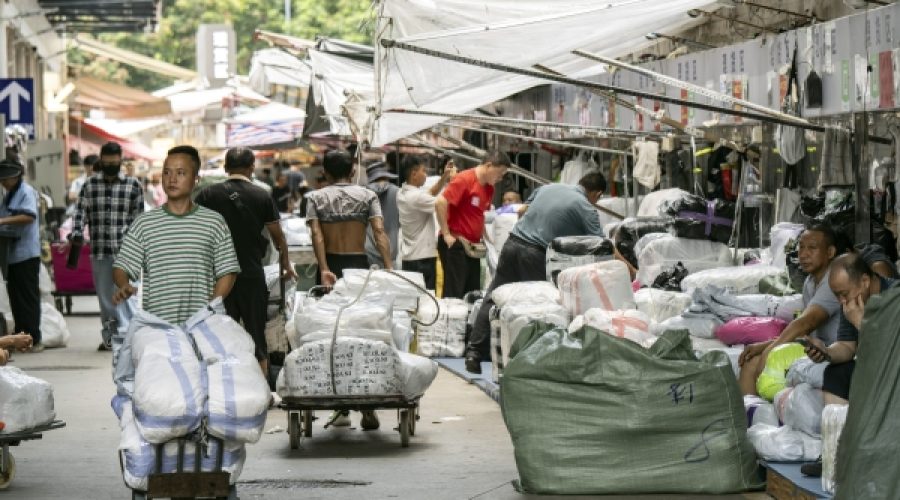ترامپ آتشبس تعرفهای چین را تمدید کرد: این چه معنایی برای رشد بازار و سرمایهگذاریهای شما دارد؟
دونالد ترامپ، رئیس جمهور آمریکا، روز دوشنبه فرمان اجرایی تمدید آتشبس تجاری بین ایالات متحده و چین را برای سه ماه دیگر، تا 10 نوامبر، امضا کرد. این تمدید، به طور موقت از افزایش تعرفهها و کنترلهای صادراتی که اقتصاد جهانی را آشفته کرده است، جلوگیری میکند. این اقدام به هر دو کشور زمان بیشتری برای حل اختلافاتشان میدهد و راه را برای نشست احتمالی بین ترامپ و شی جین پینگ، رئیس جمهور چین، در اواخر امسال هموار میکند. ترامپ روز دوشنبه اعلام کرد که مذاکرات به طور مثبت در حال پیشرفت است و در کاخ سفید اظهار داشت: «آنها بسیار خوب عمل کردهاند - رابطه من و رئیس جمهور شی بسیار خوب است.»
مقامات ارشد اقتصادی در حال نهایی کردن توافق موقت برای ادامه آتشبس بودند که در ابتدا طی مذاکرات ماه گذشته در سوئد منعقد شده بود. آتشبس قبلی قرار بود سهشنبه منقضی شود. اگرچه ترامپ این تصمیم را تا آخرین لحظه به تعویق انداخت، اما تمدید آتشبس از بازگشت فوری تعرفههایی که میتوانست جنگ تجاری بین دو اقتصاد بزرگ جهان را تشدید کند، جلوگیری کرد - درگیری مداومی که بازارهای جهانی را در طول سال مختل کرده است.
یکشنبه شب، ترامپ از چین خواست خرید سویای آمریکایی را چهار برابر کند و تأکید کرد که این امر به کاهش کسری تجاری ایالات متحده کمک خواهد کرد. ترامپ در وبسایت Truth Social نوشت: «چین نگران کمبود سویا است. کشاورزان بزرگ ما قویترین سویاها را تولید میکنند.» که مستقیماً رئیس جمهور شی را مخاطب قرار داد.
امسال، ایالات متحده و چین در بحبوحه تشدید تعرفههای اعمال شده توسط ترامپ، سه دور رسمی مذاکرات تجاری را برگزار کردهاند. تعرفههای ایالات متحده بر کالاهای چینی به 145% رسید، در حالی که چین صادرات آهنرباهای خاکی کمیاب را که برای تولیدکنندگان آمریکایی حیاتی هستند، محدود کرد. برای کاهش تنشها، یک آتشبس 90 روزه برقرار شد که در آن ایالات متحده تعرفههای واردات چین را به 30% کاهش داد، چین تعرفههای کالاهای آمریکایی را به 10% کاهش داد و موافقت کرد که صادرات آهنرباها را از سر بگیرد.
پس از مذاکرات سوئد، نمایندگان تجاری ایالات متحده نسبت به تمدید ۹۰ روزه دیگر ابراز خوشبینی کردند. جیمیسون گریر، نماینده تجاری ایالات متحده، هشدار داد که در صورت عدم دستیابی به توافق، تعرفهها میتوانند به ۸۰۱TP3T افزایش یابند، در حالی که اسکات بسنت، وزیر خزانهداری، اظهار داشت که فقط مسائل فنی باقی مانده که باید حل شوند. مذاکرات فراتر از تعرفهها گسترش یافته و نگرانیها در مورد ظرفیت تولید مازاد چین و خرید نفت این کشور از روسیه و ایران را نیز در بر گرفته است.
مذاکرات همچنین به کنترلهای صادراتی ایالات متحده بر ریزتراشههایی که برای توسعه فناوریهای هوش مصنوعی چین حیاتی هستند، پرداخته است. علیرغم نگرانیهای امنیت ملی، دولت ترامپ رویکردی معاملهگرایانه اتخاذ کرده است و انتظار میرود شرکتهایی مانند انویدیا و Advanced Micro Devices به عنوان بخشی از یک توافق مالی منحصر به فرد، مالیات 15% را برای فروش تراشههای هوش مصنوعی به چین به ایالات متحده بپردازند.
مذاکرات تجاری با چین مستقل از توافقات اخیر دولت ترامپ با سایر شرکا، از جمله ژاپن، کره جنوبی و اتحادیه اروپا، که در آنها تعهدات سرمایهگذاری قابل توجهی از سوی ایالات متحده در ازای کاهش تعرفهها تضمین شده بود، در حال انجام است.
در همین حال، ترامپ همچنان از تعرفهها به عنوان اهرم فشار در جبهههای مختلف دیپلماتیک استفاده میکند. هفته گذشته، او تعرفههای کالاهای هندی را تا حدی در پاسخ به امتناع هند از محدود کردن خرید نفت روسیه، دو برابر کرد و به 50% رساند. با این حال، تعرفههای مشابهی علیرغم خرید نفت خام روسیه توسط چین، علیه این کشور اعمال نشده است. جی دی ونس، معاون رئیس جمهور، در فاکس نیوز خاطرنشان کرد که تعرفههای مربوط به نفت روسیه علیه چین میتواند مورد بررسی قرار گیرد، اما ترامپ به دلیل پیچیدگی روابط ایالات متحده و چین هنوز تصمیمی نگرفته است.
در دوره اول ریاست جمهوری ترامپ، یک توافق تجاری گسترده با چین حاصل شد، از جمله تعهدات چین برای خرید میلیاردها دلار محصولات کشاورزی آمریکایی. با این حال، چین در بحبوحه همهگیری کووید-۱۹ نتوانست به این وعدهها عمل کند و روابط دوجانبه را بیش از پیش متشنج کرد.
ترامپ بار دیگر بر آمادگی خود برای دیدار با رئیس جمهور شی تأکید کرده است، اما اصرار دارد که چنین دیداری تنها در صورت دستیابی به یک توافق تجاری رخ خواهد داد. ترامپ هفته گذشته در مصاحبه با CNBC گفت: «او درخواست ملاقات کرد و اگر به توافق برسیم، به احتمال زیاد قبل از پایان سال جلسهای خواهم داشت. اگر به توافق نرسیم، من جلسهای نخواهم داشت.»
بازارهای آسیایی روز سهشنبه واکنش مثبتی نشان دادند و توکیو با استقبال سرمایهگذاران از تمدید آتشبس تعرفهای، به رکورد جدیدی دست یافت. با این حال، پیشبینیهای محتاطانهای در آستانه انتشار دادههای کلیدی تورم ایالات متحده در اواخر روز وجود داشت.
کاخ سفید در فرمان اجرایی خود تأکید کرد که «کسری تجاری سالانه بزرگ و مداوم کالاهای آمریکایی» «تهدیدی غیرمعمول و فوقالعاده برای امنیت ملی و اقتصاد ایالات متحده» محسوب میشود. با این وجود، ویلیام یانگ، تحلیلگر گروه بینالمللی بحران، اظهار داشت: «پکن از ادامه مذاکرات ایالات متحده و چین خوشحال خواهد شد، اما بعید است که امتیازی بدهد.»
این مقاله در ابتدا در نیویورک تایمز منتشر شد.
تحلیل ویژه از عمانت | بازار عمان را کشف کنید
تمدید آتشبس تجاری آمریکا و چین یک دریچه استراتژیک برای ثبات بازار جهانی فراهم میکندو با کاهش ریسک شوکهای تعرفهای، به کسبوکارهای عمانی که به تجارت بینالمللی متکی هستند، سود میرساند. با این حال، با توجه به تداوم مسائل عمیقتر مانند کنترل صادرات و تنشهای ژئوپلیتیکی، عدم قطعیت همچنان پابرجاست.، نشان میدهد که سرمایهگذاران هوشمند باید تحولات را به ویژه در بخشهای فناوری و تولید مرتبط با زنجیرههای تأمین ایالات متحده و چین از نزدیک زیر نظر داشته باشند. کارآفرینان در عمان باید فرصتهایی را در بخشهایی که کمتر در معرض این تنشها قرار دارند، بررسی کنند و در عین حال آماده شوند تا به سرعت با تغییرات سیاستی که بر پویایی تجارت جهانی تأثیر میگذارند، سازگار شوند.



